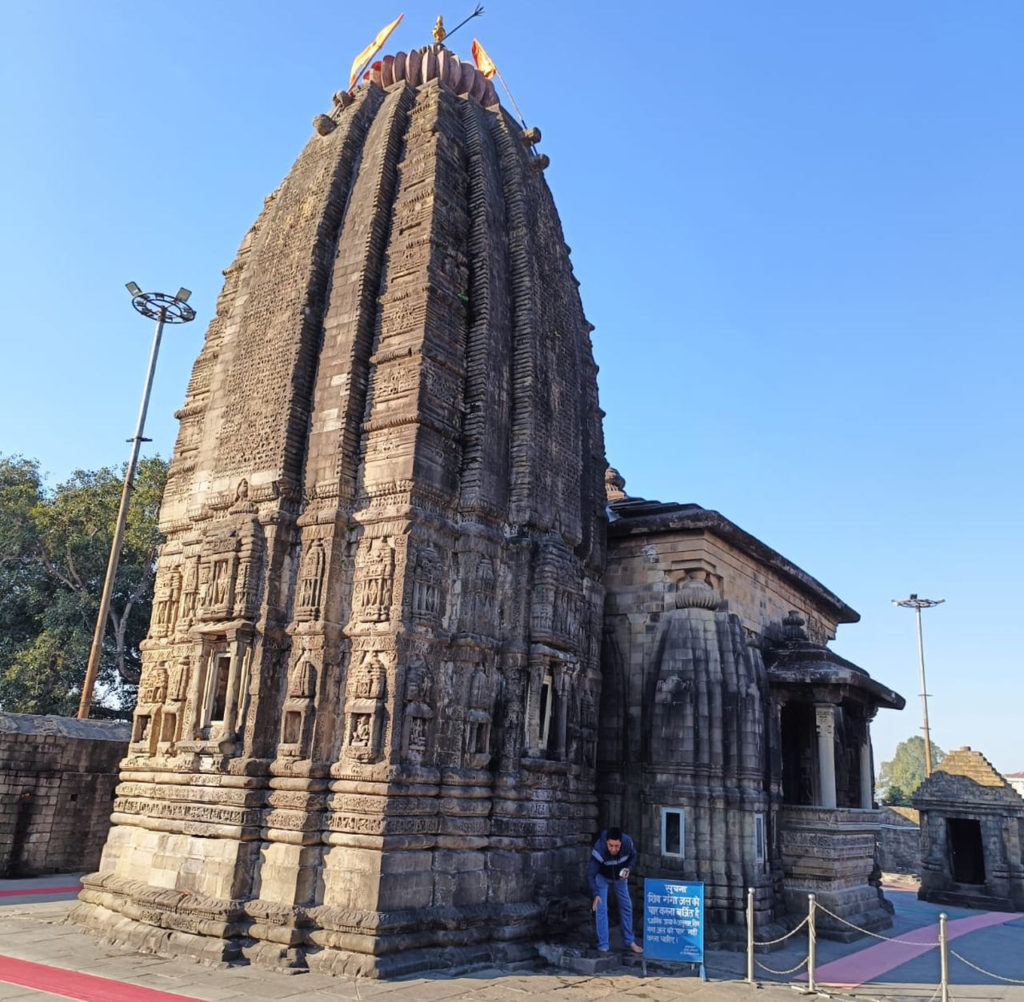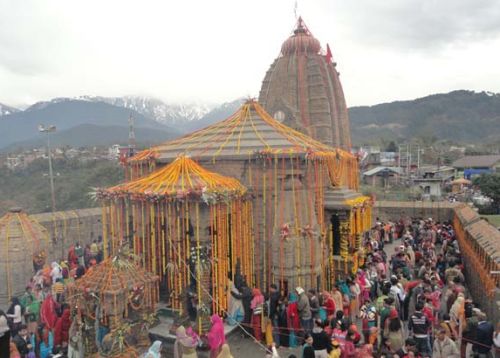In the heart of the Himalayan tapestry, where the air is laced with spirituality and the mountains echo with ancient whispers, Baijnath Temple emerges as a celestial ode to divine craftsmanship. Carved into the very fabric of time, this sacred sanctuary dedicated to Lord Shiva beckons travellers and seekers alike, inviting them to witness not just an architectural marvel but a living testament to the artistry of the divine. Baijnath Temple is more than stone and mortar; it’s a portal to a bygone era, a repository of tales etched in every meticulously carved surface. Join us on a journey through the sacred halls where history, devotion, and timeless craftsmanship converge in harmonious splendour. Welcome to Baijnath Temple – where divinity meets stone, and the echoes of centuries past reverberate through the ages.
The narrative of Baijnath Temple unfolds against the backdrop of the Katoch dynasty, a tapestry woven with threads of devotion and spiritual calling. In the 13th century, two intrepid merchants, Ahuka and Manyuka, set the wheels of history in motion by commissioning the construction of this sacred haven. The temple became not just a place of worship but a living archive of the cultural richness that defined the region.
Architectural Symphony:
Baijnath Temple proudly stands as a testament to the Nagara style of North Indian temple architecture. The towering shikhara, as one approaches the main sanctum, is a prelude to the architectural marvel that awaits. The sanctum itself houses the sacred Lingam of Lord Shiva, a symbol of divine energy enshrined in mathematical precision and aesthetic brilliance. The exterior of the temple unfolds as a canvas of friezes, each intricately carved to narrate tales from the annals of Hindu mythology.
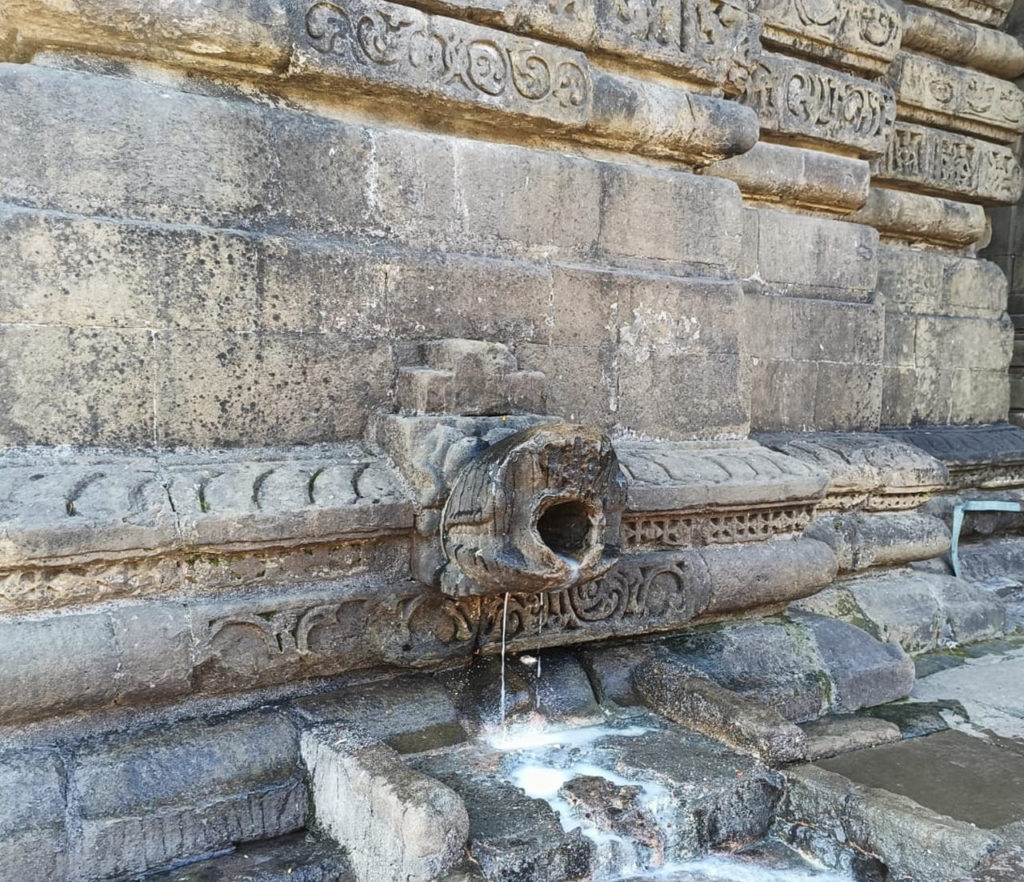
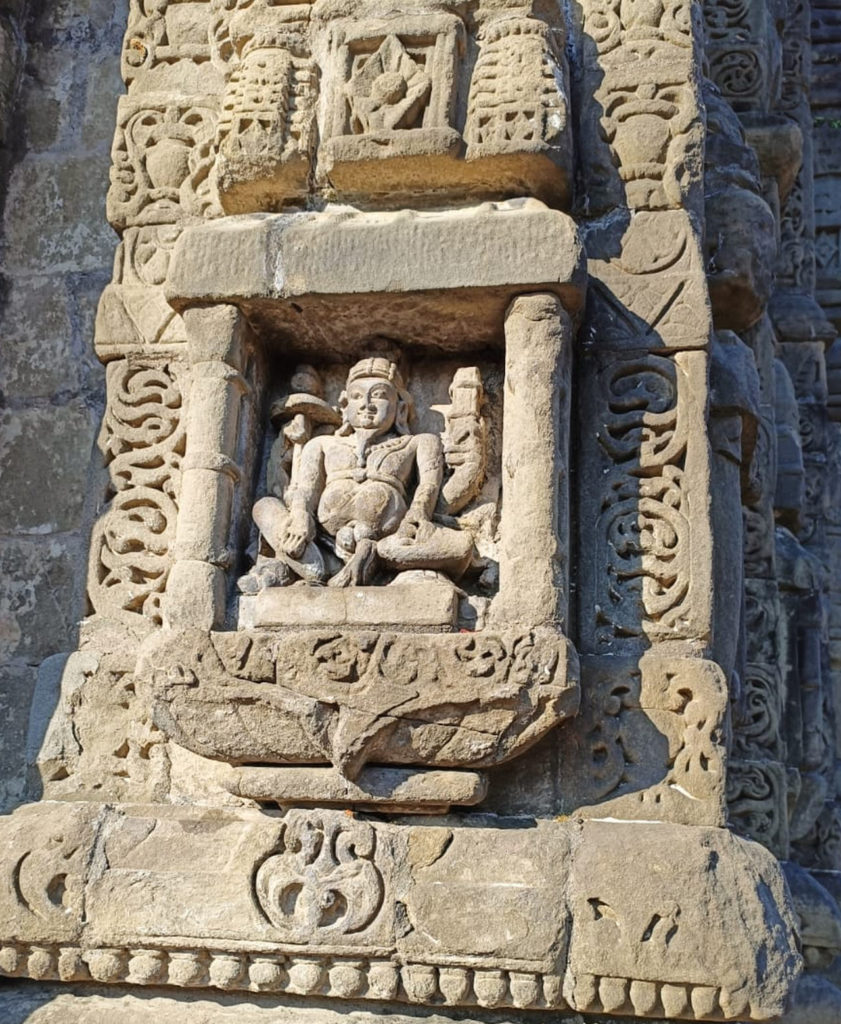
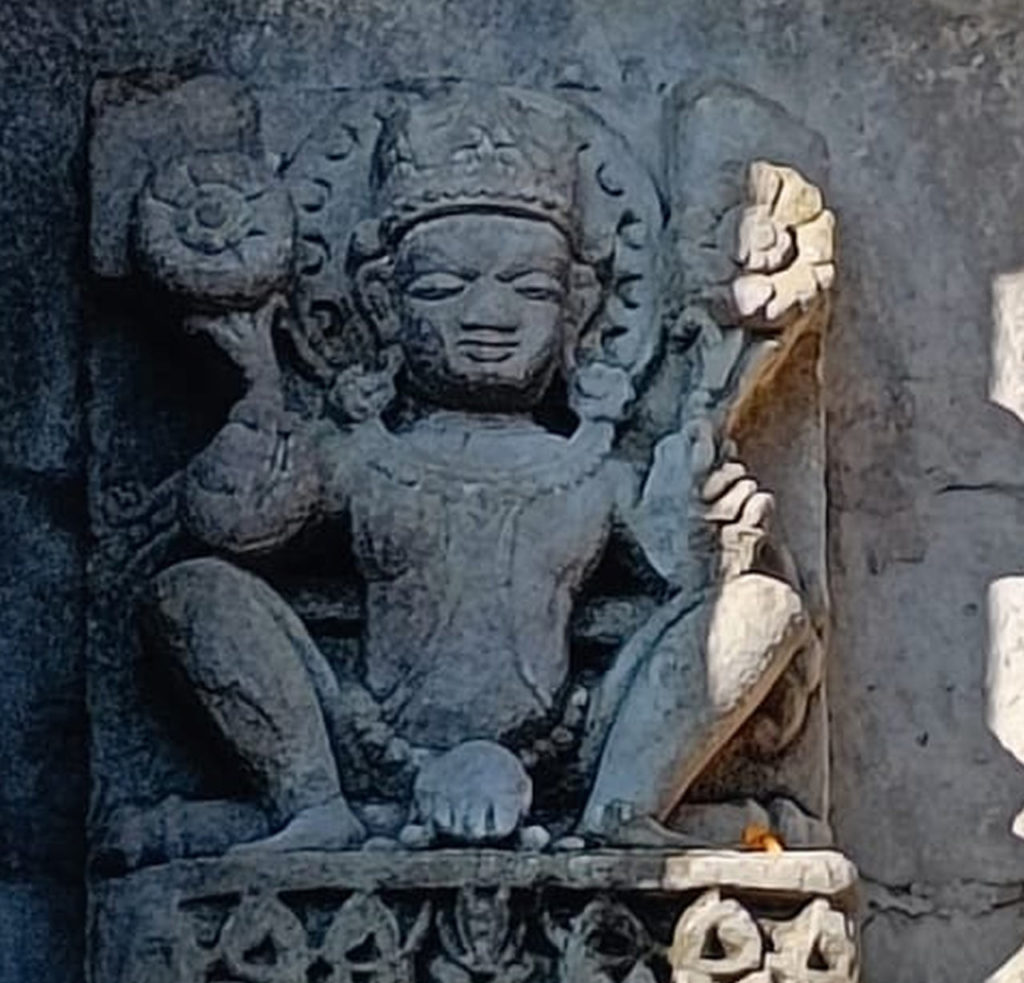
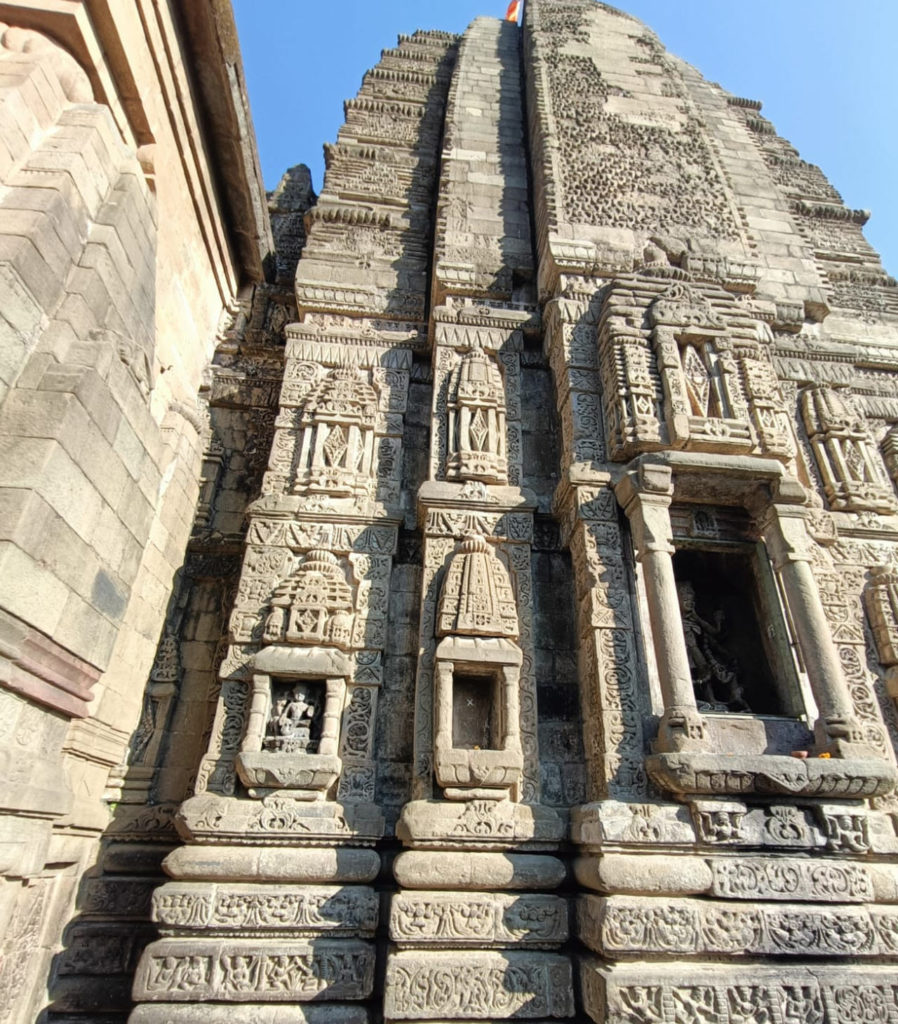
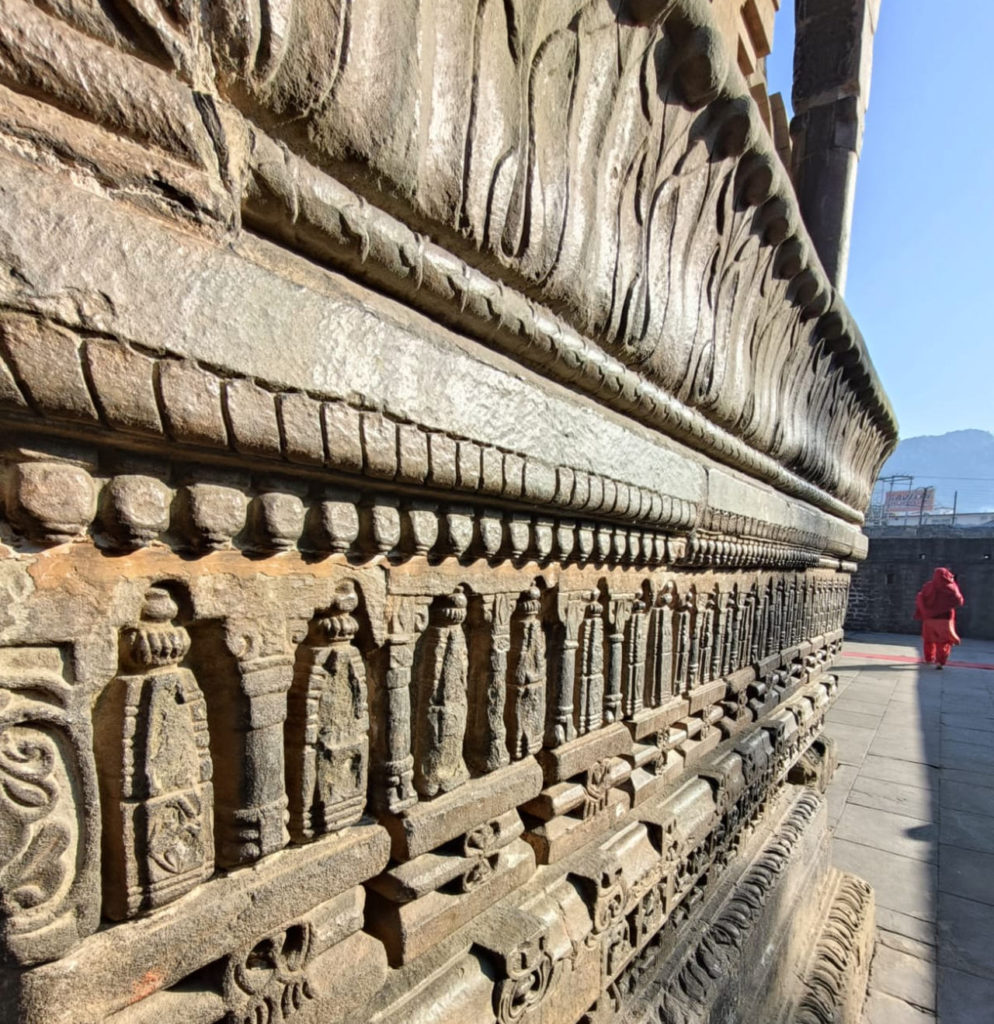
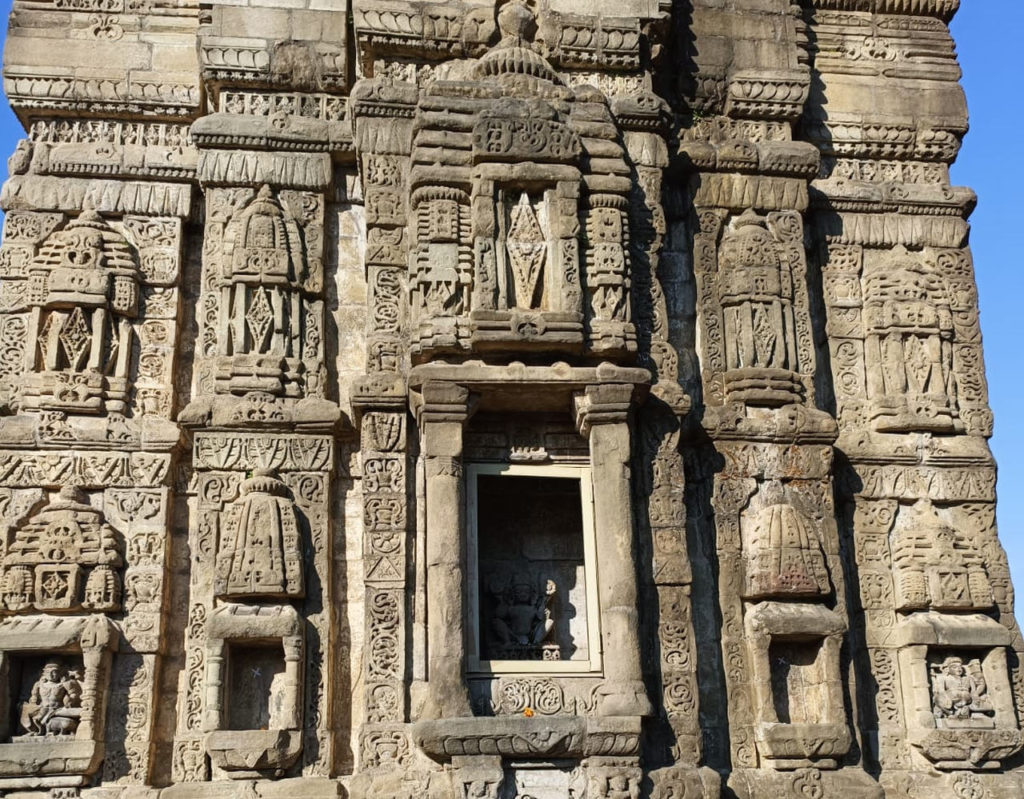
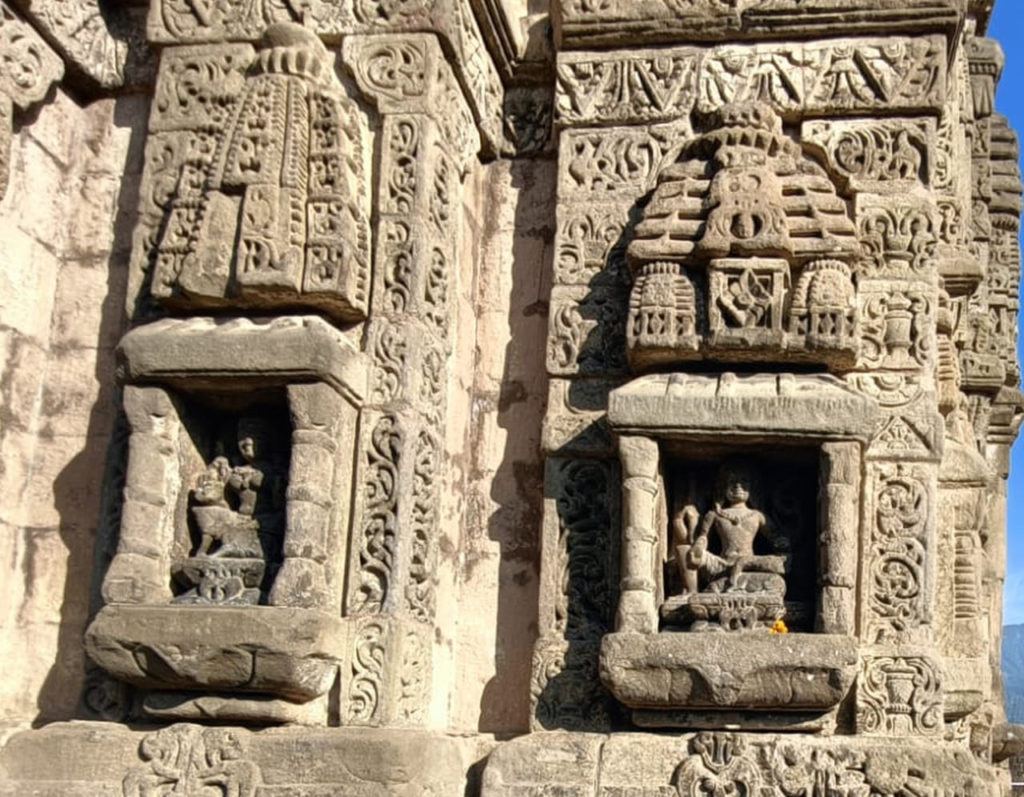
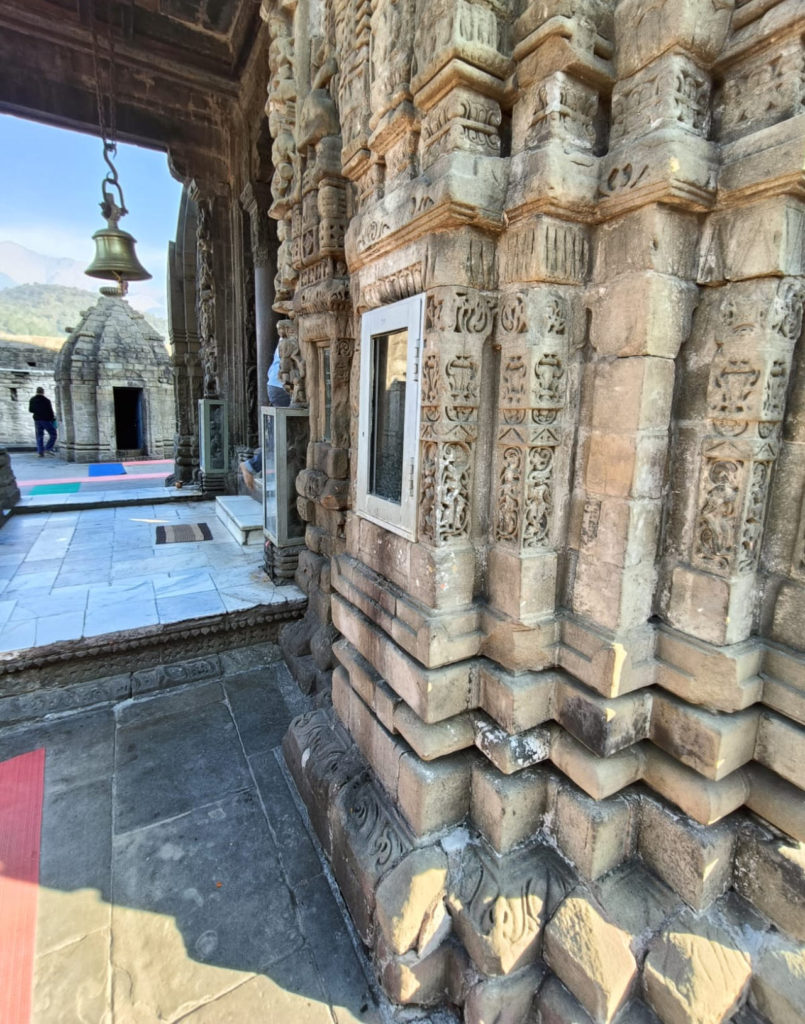
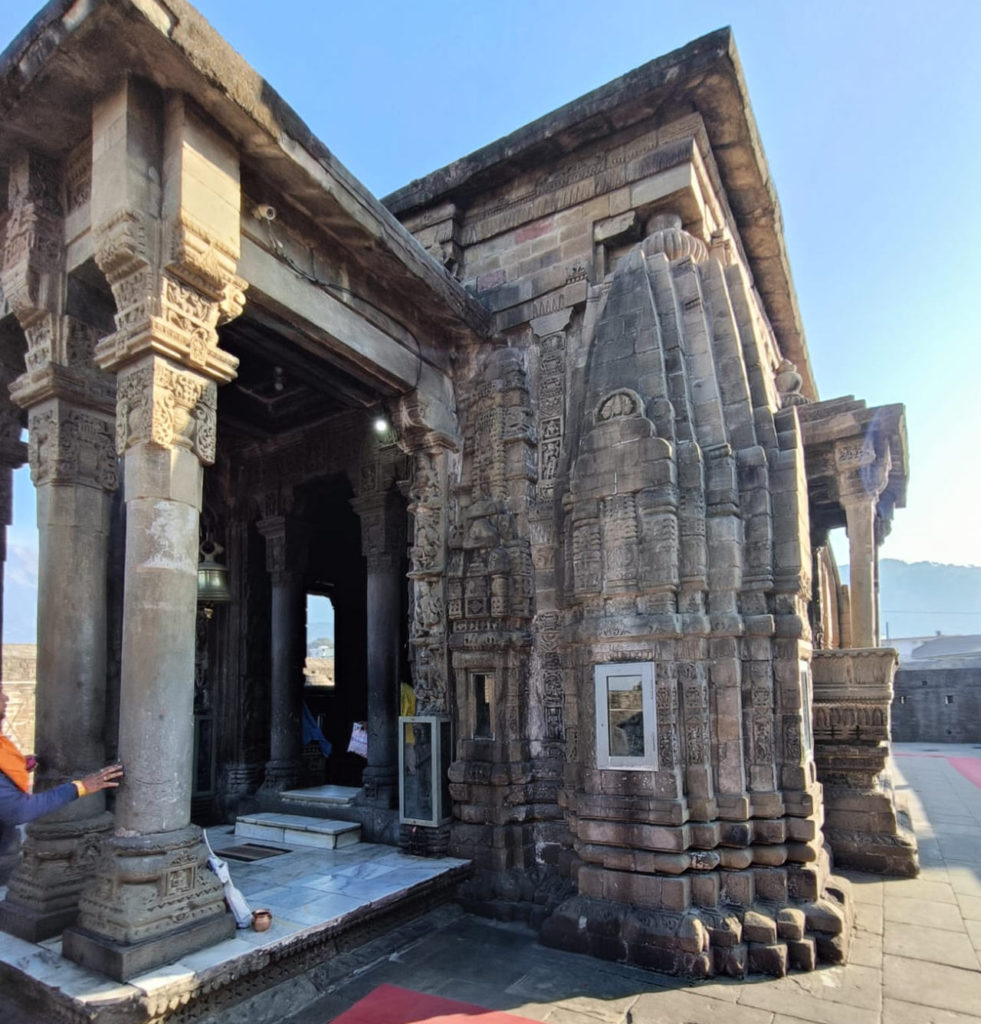
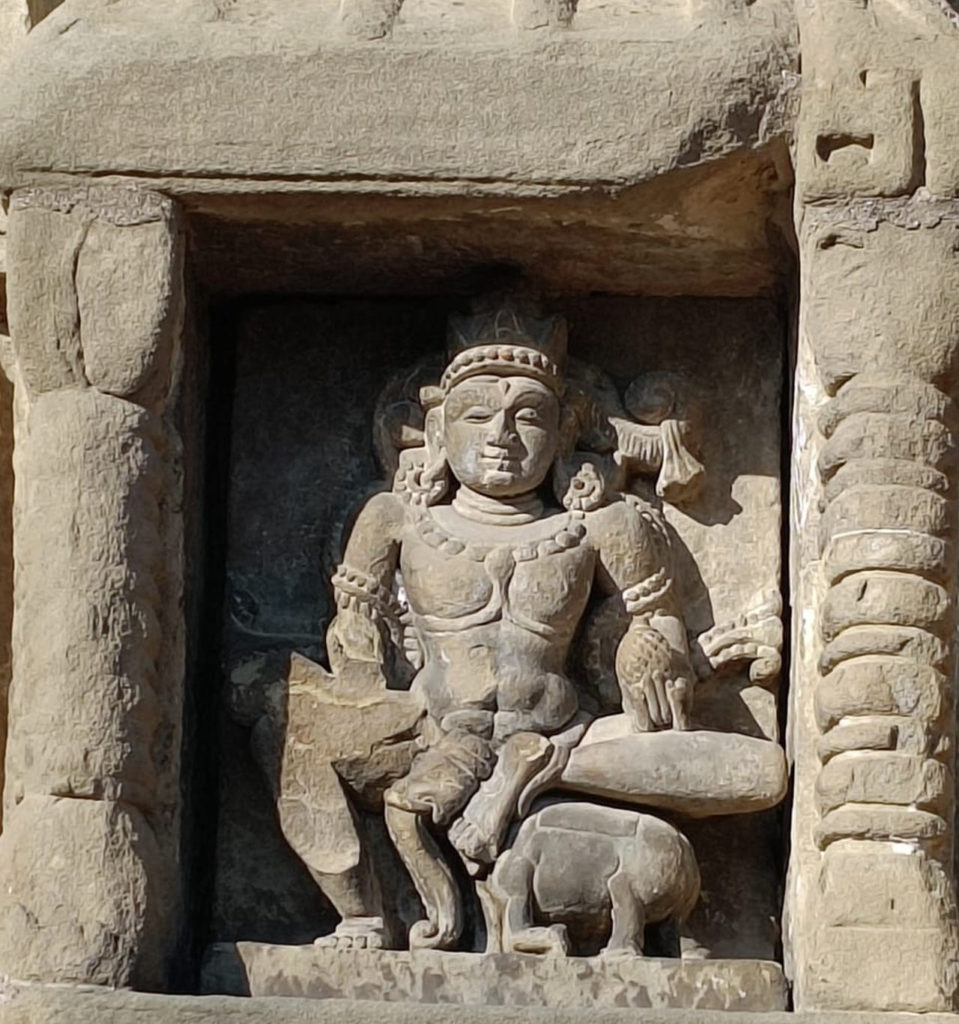
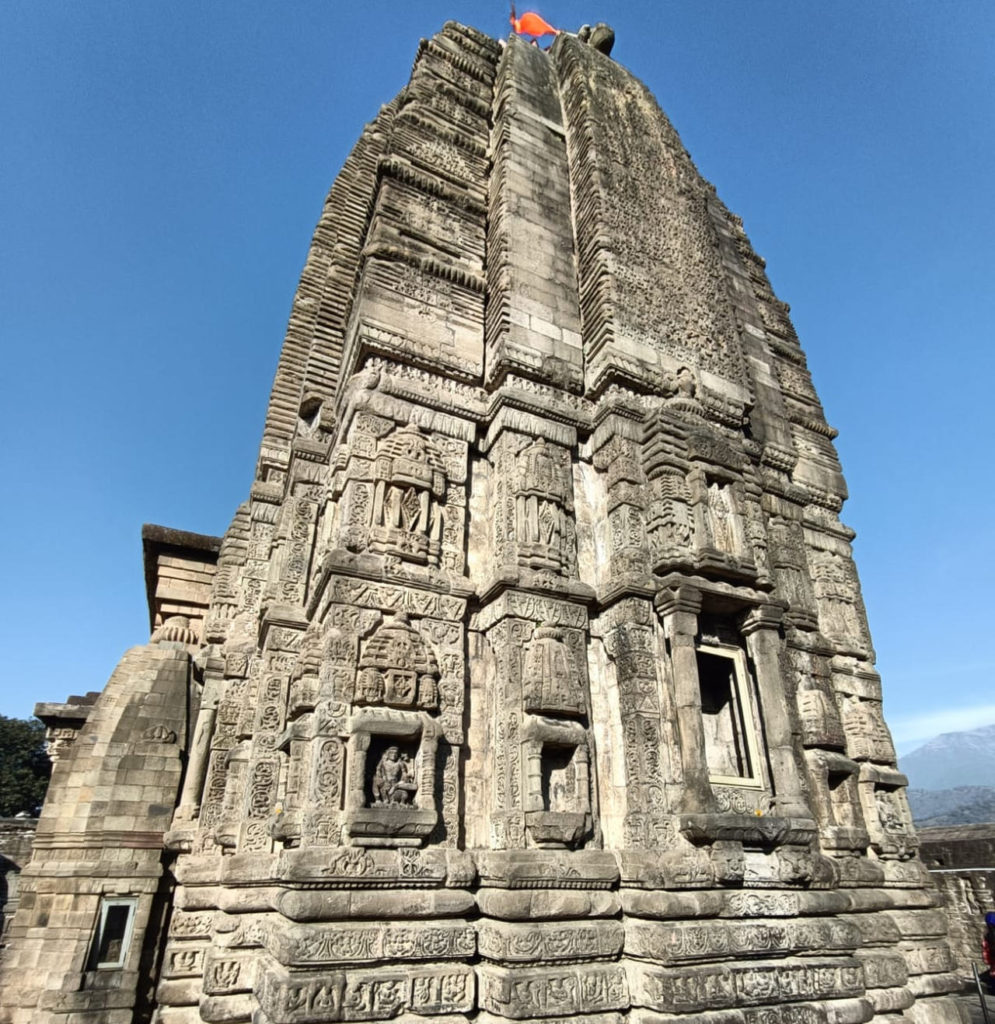
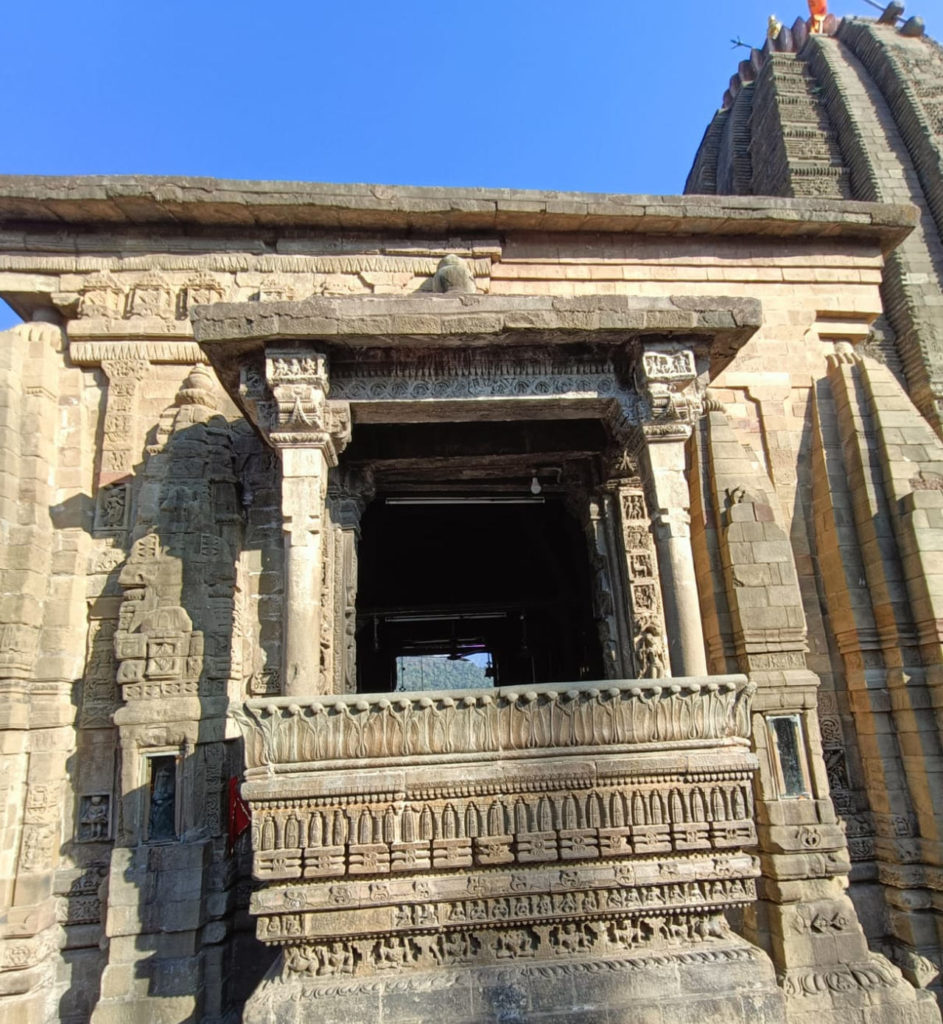
The true enchantment of Baijnath reveals itself in the intricate stone carvings that adorn its sacred walls. The entrance, guarded by formidable dwarapalakas, opens to a visual extravaganza within. Stone carvings narrate tales from Hindu epics, transforming the temple into a living tableau of mythology. The Mandapa, with its ornate pillars and ceilings, stands as a testament to the craftsmanship of a bygone era. Each carving invites visitors on a journey through celestial dances, divine battles, and the cosmic union of gods and goddesses.
Mythological Reverberations:
Legend has it that Baijnath Temple carries mythological echoes associated with the mighty demon king Ravana. It is said that Ravana, in his quest for immortality, undertook severe penance at Baijnath to appease Lord Shiva. The Lord, moved by his devotion, granted him the boon of invincibility against all beings except humans. This mythological association lends an aura of mystique to Baijnath, as devotees and visitors ponder the intertwining of mortal desires and divine blessings.
Pilgrimage and Spiritual Resonance:
Baijnath Temple is not merely an archaeological relic; it remains a vibrant pilgrimage site, drawing devotees and history enthusiasts alike. The rhythmic chants and the fragrant incense create an atmosphere of reverence, inviting visitors to partake in the spiritual aura that permeates the ancient halls. The temple’s courtyard, with its sacred pond and surrounding deities, transcends the temporal, inviting contemplation and connection with the divine.

Preservation Efforts:
As the sands of time have gently worn against the temple’s structural integrity, concerted efforts by preservationists and heritage enthusiasts have ensured the safeguarding of this architectural gem. Stone carvings, susceptible to the relentless touch of the elements, have undergone meticulous restoration, preserving their intricate details for generations to come. These preservation initiatives underscore a commitment to maintaining Baijnath’s cultural and historical legacy.
Epitome of Timeless Beauty:
In the heart of Baijnath Temple, where stone meets spirituality, the past converges with the present. The intricate carvings and architectural splendour are not mere relics but living tributes to the profound connection between humanity and the divine. As visitors traverse its sacred halls, they are transported to an era where devotion found expression in stone, and craftsmanship became a form of worship. Baijnath Temple, with its timeless beauty, stands as a testament to the enduring legacy of divine craftsmanship, eternally etched in the stones that resonate with centuries of reverence. In every carved detail, the temple whispers the secrets of the past, inviting all who enter to partake in the enduring legacy of this sacred site.


